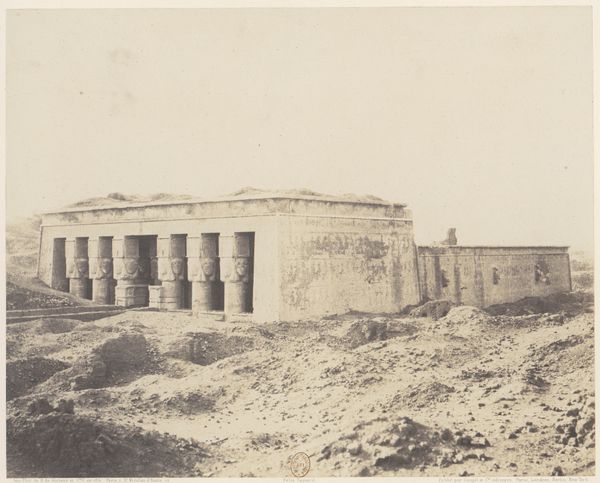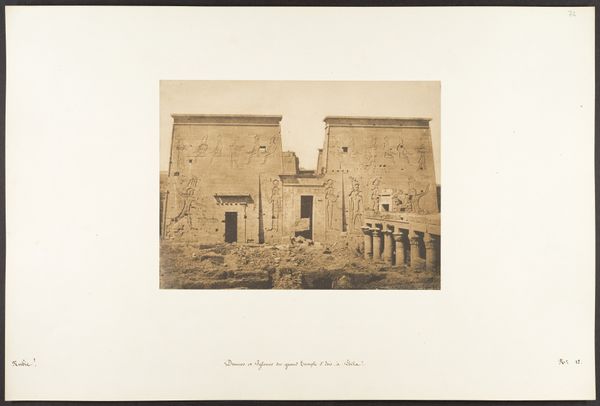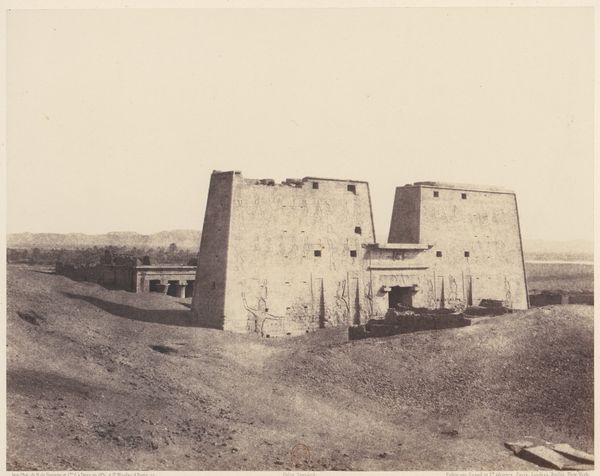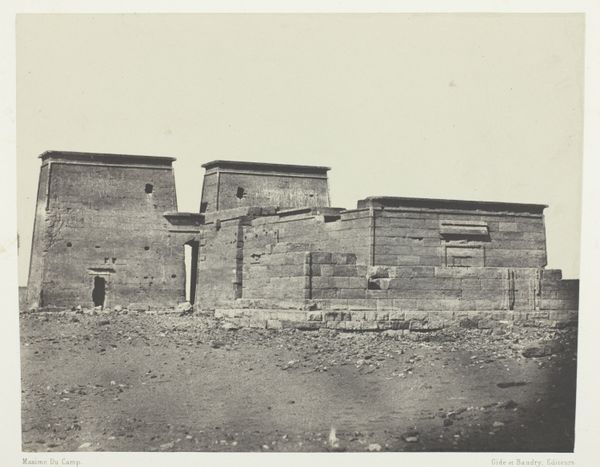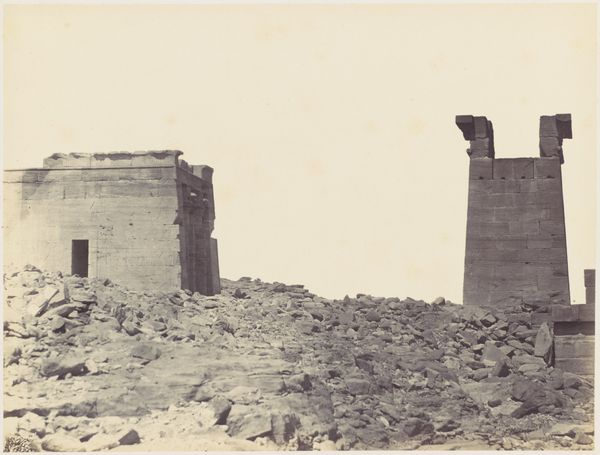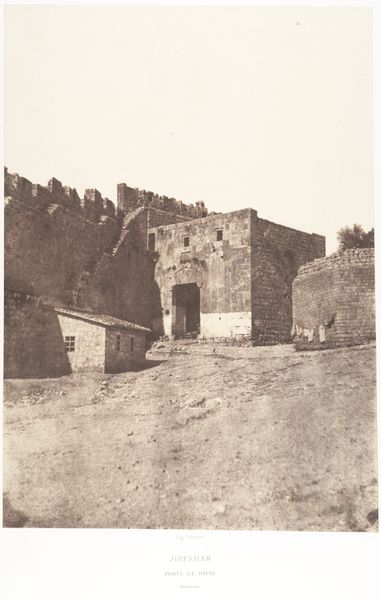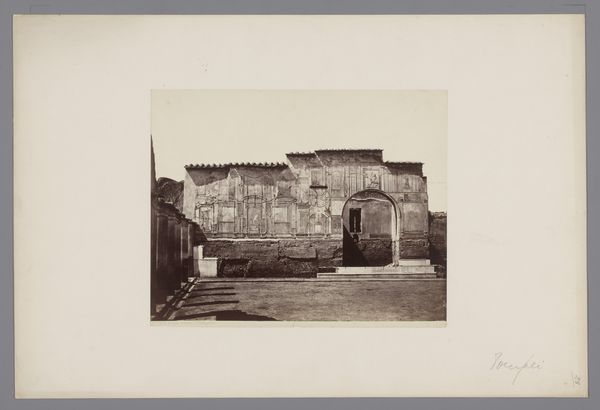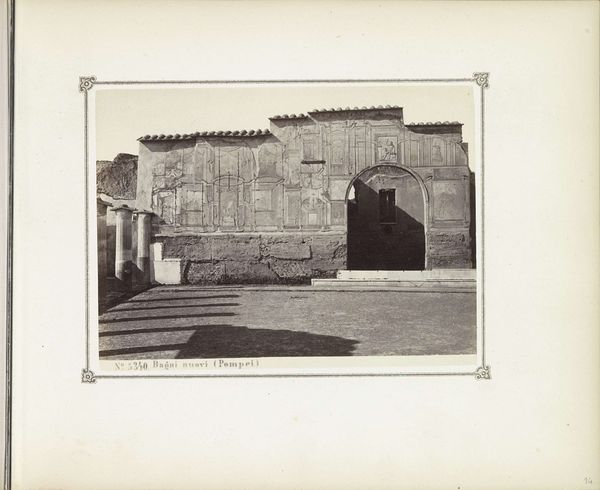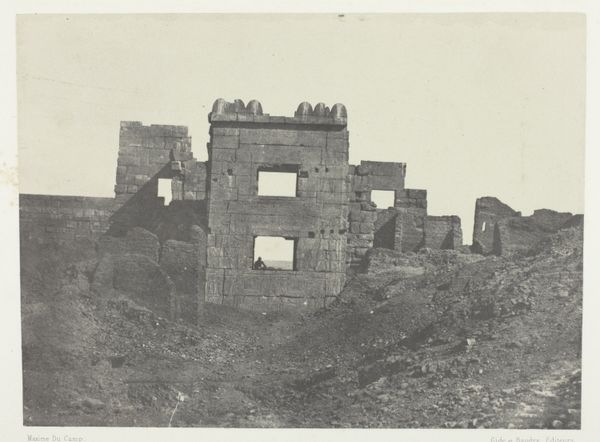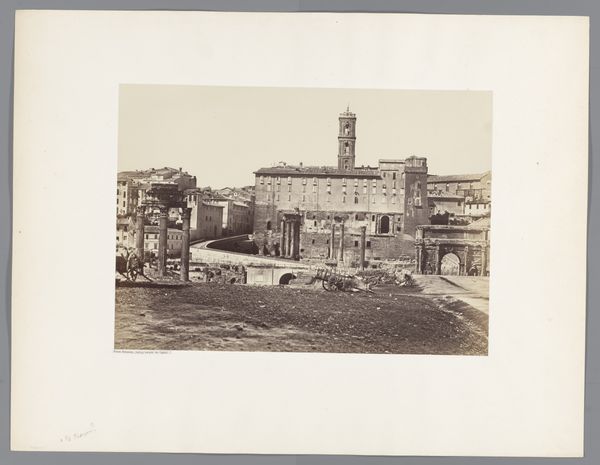
Ile de Fîleh (Philæ), Premier Pylône - Vue Prise de la Plate-Forme de la Colonnade Orientale en P 1851 - 1852
0:00
0:00
architecture
#
excavation photography
#
photo of handprinted image
#
wedding photograph
#
photo restoration
#
wedding photography
#
about to rain
#
unrealistic statue
#
carved into stone
#
arch
#
19th century
#
architecture
#
shadow overcast
Dimensions: 24.3 x 30.5 cm. (9 9/16 x 12 in.)
Copyright: Public Domain
Editor: This photograph, taken by Félix Teynard between 1851 and 1852, is titled "Ile de Fîleh (Philae), Premier Pylône - Vue Prise de la Plate-Forme de la Colonnade Orientale en P." It's quite imposing. What strikes me is how the massive, geometric architecture dwarfs the human-like figures carved into its surface. How do you interpret the stark geometry of this image? Curator: Indeed, the geometric purity is paramount. Observe how Teynard frames the pylon, emphasizing its monumental scale and block-like construction. The photograph reduces the architectural forms to their essential shapes – rectangles, squares, and a trapezoid capping each tower. Note, also, how the light serves to accentuate these forms, creating stark contrasts and further simplifying the composition. Do you see how the carved figures, while present, are visually subservient to the overall structure? Editor: Yes, they seem more like texture on the stone, secondary to the overall form. Is the framing intentional, to minimize the narrative element of those carvings? Curator: Precisely. Teynard’s framing and tonal range shift our focus away from the narrative details within the carvings, directing it toward an appreciation of the architectural object as a study in mass, volume, and geometric relationships. The photograph isn't just about what is depicted but how it is depicted, forcing the viewer to acknowledge the power of form over content. It reduces the cultural artifact to a set of abstract shapes and relationships, prioritizing a visual language divorced from historical or cultural context. Editor: So, the essence isn’t about the figures or the story they tell, but about the building blocks – literally and figuratively – of the architecture itself. It reframes the object into abstract values. I didn't consider it from this vantage point. Thank you. Curator: You're welcome. Looking closely at an artwork's underlying structural qualities can provide profound insights.
Comments
No comments
Be the first to comment and join the conversation on the ultimate creative platform.


